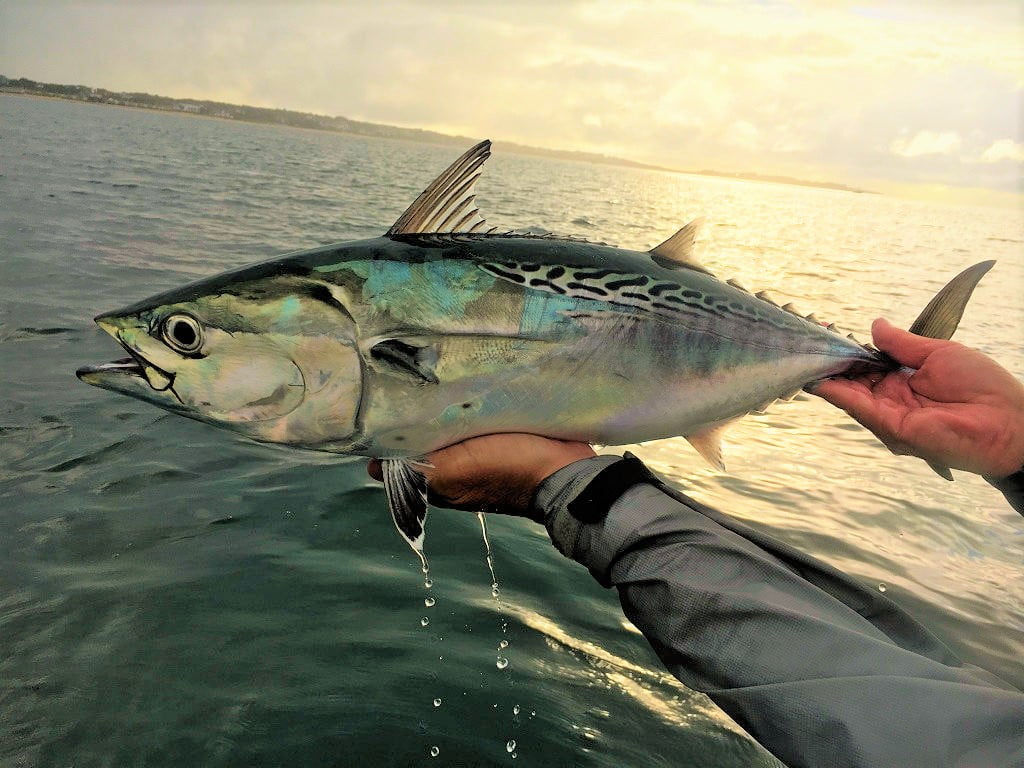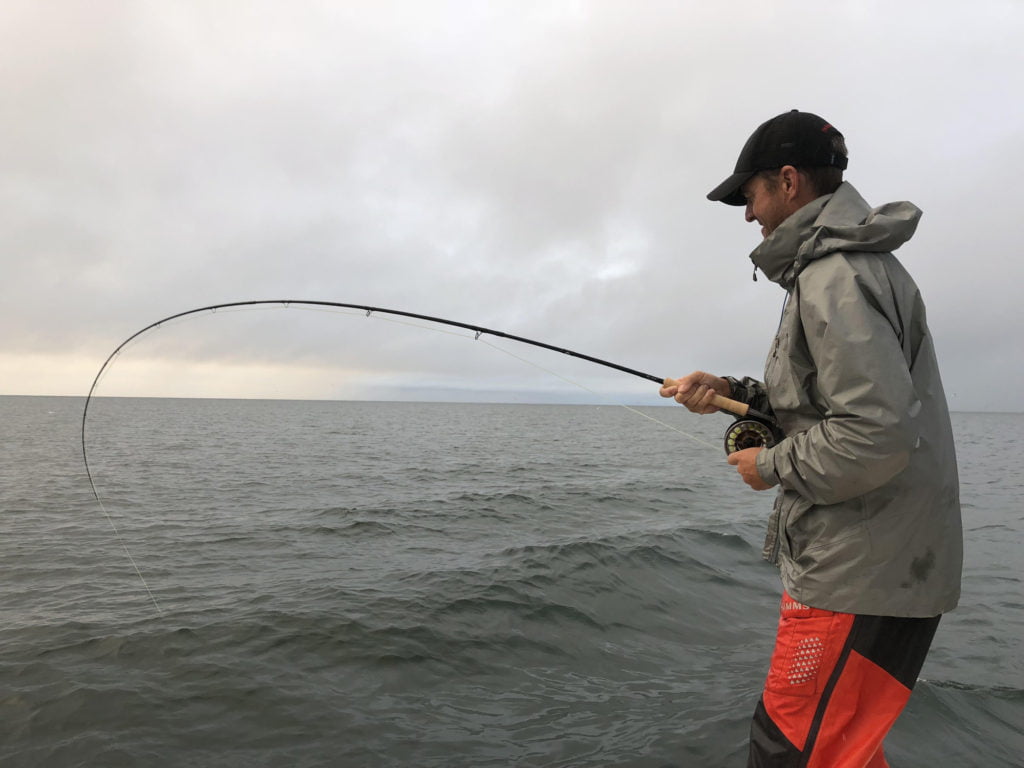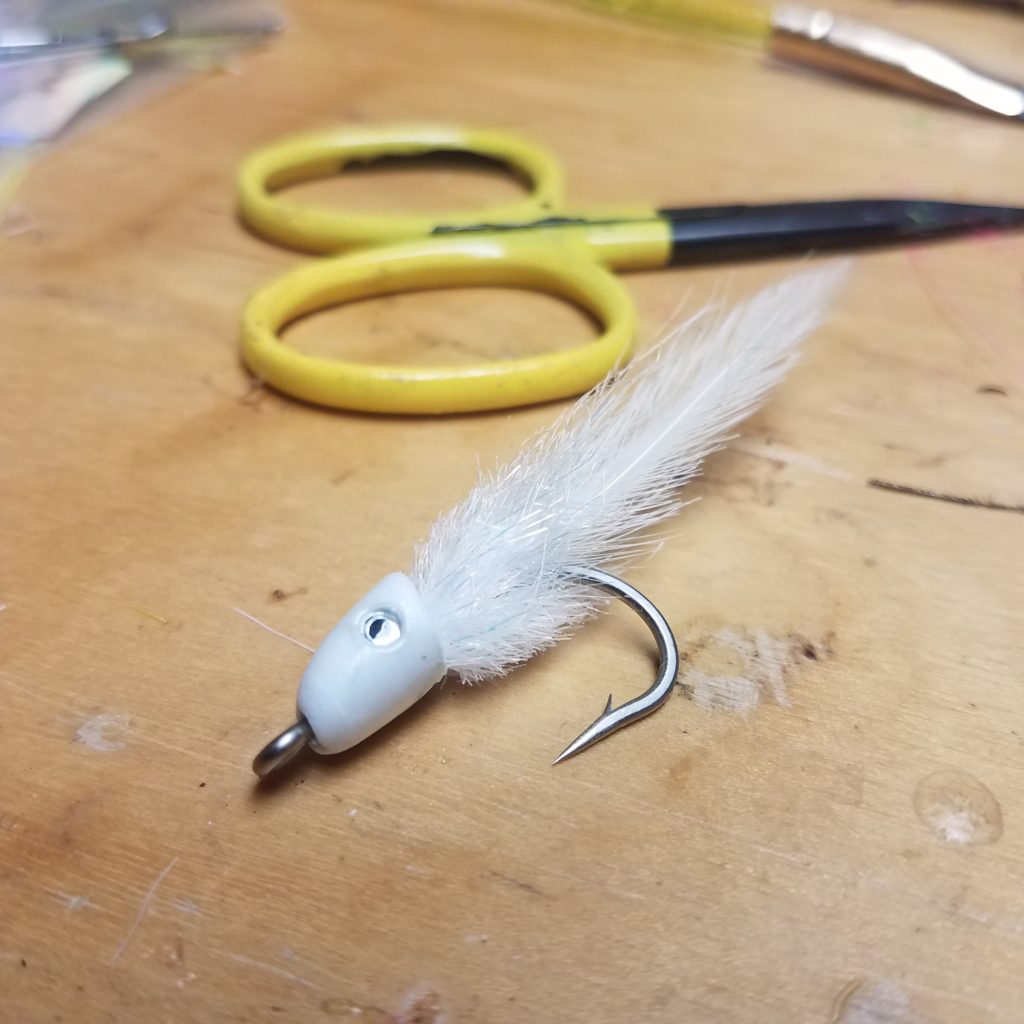
“A rocket strapped to a football,” is the best way I’ve head false albacore described. Sure, it sounds a bit exaggerated, but a false albacore’s ability to put on a speed show is unrivaled by many other comparable game fish. The explosive blitzes and readiness to eat flies, make false albacore a fly angler’s dream. When hooked, one should expect a very fast run that almost always peels dozens of yards into the backing. While “albies” will not showcase the same power as their larger tuna cousins, they’re still plenty of fun on a 9 or 10 weight.
Every fall “albies” arrive from warmer offshore waters around my home waters in Montauk, New York, to feed heavily in preparation for their long trip back down the Atlantic. As the fish began to arrive this year, I reflected on how my own albie tactics have changed.
For a while, the only way I ever fished for them was run and gun style. Simply put, I would pull up to a school, cast a size two Surf Candy or Ray’s Fly with an intermediate line and double hand strip as fast as I could. It worked well and there are certainly times where it is the best way to fish for them. Even as such, I knew there had to be other ways to pursue them with fly tackle.
Over the years, I’ve learned that watching albies eat from aerial footage shows a unique situation. This has dramatically helped my approach. From the water, their behavior appears violent and sporadic. There are fish popping up and chasing schools of bait fish in every direction. However, watching them crash bait from an overhead view, shows their unique approach. Just like tuna, they methodically work in groups, surrounding the bait ball and picking off stragglers as they try to escape. This was the information I needed, to approach these fish in a new, more dynamic fashion.
First, with this newfound knowledge, I began to fish for them on top. The intermediate line was switched to a floater, and Surf Candies were swapped for Crease Flies, Gurglers, and a Slider pattern I developed myself. Upon switching tactics, my results were immediate. While I still casted for the edge of the school, I switched from a super-fast double hand strip, to quick, yet short popping strips that accurately mimic a baitfish fleeing from the ball. With this, my hook-up rate increased significantly.
Also, instead of running and gunning, I started to drift a rip line and wait for the fish to come to me. I’ve found this to work very well as albies predictably tend to follow rips. With a little patience as you drift, they will show up. This tactic also proves to be more efficient, especially with other boats in the water, and seems to also provide more exciting fish “blow-ups.”

False Albacore or “Albies” can put a bend in a 10 weight. Here, Pro Advisor Jeff Currier holds on for dear life.
This past year exposed another advantage to top water fishing – the ability to lift more line off the water without wasting time stripping intermediate line back in to make another cast. As there where fewer schools of fish last year, with some schools only lasting thirty seconds, more often than not, only one shot was presented. With the floating line, the ability to lift a huge amount of line off the water, haul and hit another cast as the school emerged, was an instant advantage, even with a ton of fly line out. In a situation where you only get one chance, making quality casts early can mean the difference between hooking up and not. I can’t quite decide if alibies are hitting top water to feed, or simply out of a reaction. Lately I’ve been leaning towards the latter. The fish see the fly as being lost or escaping the bait ball and attack what seems to be an easy meal.
My general albie setup is simple. Winston’s new 10 weight Alpha+ matched with an aggressive tapered floating line is my favorite setup. I prefer the 10 weight not only because of its power to pick up a lot of line, but in the wind it’s just easier to cast. It also allows me to put some heat on the fish if needed. For a leader, I prefer a 9’ of all mono, starting with a 60-pound butt section tapering down to 16lb.
Is the top water game way the only way to get them? Absolutely not. But if you’re having trouble catching them when they’re going crazy busting bait, a top water approach may be key. Don’t be afraid to change your style.

A custom “albie” topwater fly tied by Winston Pro Captain Peter Douma
Capt. Peter Douma has been fly fishing along the coast of the Northeast his whole life. Having spent most of his time fishing the waters of Montauk, New York, he realized a passion for catching stripers on the fly. After graduating college and a few years as a craft beer brewer, Peter got his USCG license and went after his dream of becoming a fly fishing guide. You can find him in Montauk chasing stripers, blues, albies, and even some pelagics, but his passion is truly big stripers on the fly at night. To book a trip with Peter, check him out at https://www.windwardoutfitters.com/.



Can you use the same technique on False Albacore near shore in San Diego, California? When and where ?